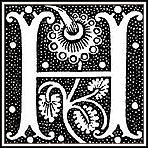


 |
 |
Valor
Valor: valuation of the Estates of Philip, Lord Wharton, 1605

Source: Cumbria Record Office, Carlisle, D/Lons/L5/2/24/1, p.318,
with the kind permission of the Trustees of the Lowther Estate
Transcript:
| Wharton xxvito | A breife abstracte or estimate of the yearlie value | |
| die Novembris | of the Rentes or Tenauntes profittes of demaines parkes and Tythes | |
| 1605 | of the righte honorable Philip lorde Wharton in West- | |
| merlande Cumberlande Yorkshire and Countie Pallentine | ||
| of Durisme as followethe: | ||
| Westmerlande | Wharton in rentes and Fines with vis paide for | |
| Noltgelde by yeare | xiliiiiisiidob |
|
| Naitbie in Rentes and Fermes with Cs for Corne mylne | ||
xxvili viis vd |
||
| Kirkbystephan with vili rente of the Gleblande | xxiiili viiid ob |
|
| Ravinstonedalle with iiiili for Corne Mylne and iiili for Tythe of Weelfeall by yeare | ||
Cxviiili viis ixd |
||
| Langdall with Flackbrigge by yeare | xviiili vis viiid ob |
|
| Teebay lordshipp with vs for Noltgelde | lili iiis iid ob |
|
| Breetherdalle with vs for Noltgelde | xiili xs vid ob |
|
| Preston patterigge with viiis iiiid bayliffe fee | xili iis vid |
|
| Shapp gravshipp with iiili for boones & wastes | lixli xvs ixd |
|
| Shapp demaines by yeare | xxiiiili iiiis xs |
|
Quick Glossary:
| ob | obolus = halfpenny |
| noltgelde | literally 'cattle tax', the vernacular term for cornage, an ancient cattle render paid by many communities to the baronial lord |
| boones | labour services |
| grav[e]shipp | the manorial rent-collecting unit; 'grave' was the northern English equivalent to reeve |
| demaine | demesne: land retained in hand by the lord. On these manors by this date the demesnes had been let to tenants |
Commentary:
A 'valor' is a summary valuation of a manor, laying out the income and expenses with a view to showing how much profit a manor could be expected to provide. Valors were based on information in manorial accounts.
The Wharton family’s extensive landholdings in northern England had been built up by Thomas, first Lord Wharton (d. 1568) in the mid-16th century. This extract is the first part of a full valuation of the Wharton estates in 1605. It gives a global figure for the income from each manor, followed by a statement of allowances and outgoings against this income. The grand total value of the estates was put at £2,107 11s 43/4d, against which were set allowances totalling £723 6s 5d, giving a clear annual value of £1,384 4s 113/4d. The Westmorland estates were valued at over £440, the most valuable manors being Ravenstonedale (£118 7s 9d), Shap (over £84 if the leased demesnes are included) and Tebay (£51 3s 21/2d). The sums for each manor represent the total rental income from the tenants, together with other sources of income (‘noltgeld’ or cornage, rent from mills, etc) as noted.
< Gallery
Credits: This site is maintained by Dr Angus Winchester and Dr Eleanor Straughton. For advice about access issues, please visit the Department's Accessibility Advice Page.
Copyright: Department of History, Lancaster University | Disclaimer: as per university policy.